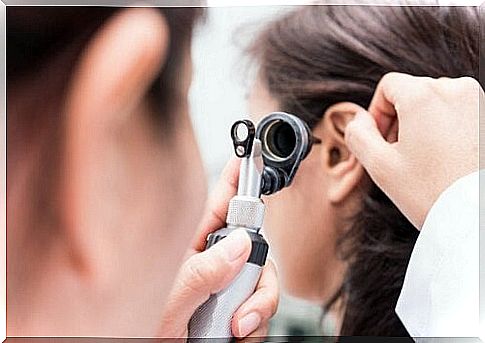Positional Vertigo: How To Prevent And Treat?

Positional vertigo, also known as benign paroxysmal postural vertigo, is a common condition in people between 40 and 50 years of age. In up to 50% of cases, the cause that causes it is not known and, in many cases, it disappears spontaneously.
One in three people suffer from an episode of simple positional vertigo in their lifetime. It is almost always temporary and without major consequences. The condition was first described by Barany, in 1921, and so far there is no specific treatment to combat it.
It is estimated that 2.5% of the population will experience a severe crisis of positional vertigo throughout their lifetime. The incidence increases with age, and up to 9% of people over 60 years of age suffer from this type of problem, which is a considerable reason for consultation.
What is positional vertigo?
Postural vertigo is defined as an illusion of movement, either from the environment or from the person. The sensation is like swinging, moving the body or moving the ground. It usually lasts for a short time, but it is recurrent.
We speak of positional vertigo, specifically, when the illusion of movement arises when changing head posture. This type of dizziness causes a sensation that varies from mild to intense. While it’s a bothersome problem, it’s rarely serious.
There are two classifications of general vertigo: peripheral and central. Postural is the peripheral type, which is the most common and is not dangerous. Central vertigo is more serious and has to do with a disease of the brain; episodes last longer and are usually more intense.

identify the problem
The basic symptom of positional vertigo is the illusory sensation of movement, which causes a certain loss of balance that most people define as dizziness or vertigo. Sometimes it is accompanied by nausea or vomiting, in addition to the sensation of having the ears covered, with rapid eye movements and dizziness.
Most of the time, these episodes come on suddenly and last for less than a minute. Generally, the movement of the head itself triggers the feeling of dizziness and its intensity. The vertigo becomes recurrent, but it can go away for a while and come back later.
Usually, your doctor can diagnose you through a clinical interview accompanied by a physical evaluation. In case of doubt, the doctor may order tests such as electronystagmography or videonystagmography, and even an MRI.
How to prevent positional vertigo?
In more than half of the cases of this type of vertigo, it is impossible to determine the cause that causes it. In general, there are no relevant risk factors, but it is more common in someone who has a family history of the problem, has had an ear infection or had a blow to the head, even if it was not serious.
Most of the cases are due to an inner ear problem. There are tubes filled with liquid that shake when the person makes a movement. If there are small pieces of calcium floating in the fluid, called canaliculi, the brain can sense the shift, even if the person is immobile.
As this type of dizziness is directly associated with head movements, the best way to prevent it is to avoid rapid or sudden head movements . It is also advisable to avoid stress and the consumption of substances that stimulate the nervous system.

How to treat positional vertigo?
There are some medications that help to lessen the feeling of dizziness, but there is a procedure called the Epley maneuver that is considered to be very effective in eliminating the symptoms. The goal is to remove the canaliculi from the ear canals so that the sensation of movement no longer occurs.
The doctor performs this maneuver in his own office. It consists of turning the head to the side where the vertigo occurs. Then, the patient is suddenly lying on his back; at that point, symptoms tend to increase. Afterwards, the head and body are slowly turned in the opposite direction.
Finally, the person sits down and repeats the exercise. Repeating this procedure leads to the disappearance of dizziness. She may return a few weeks later, which will require re-applying the technique.
The professional will define the need and frequency of the application, but we can’t just stop with that. If you suffer from recurrent dizziness, a thorough evaluation will be necessary to rule out other types of conditions.









